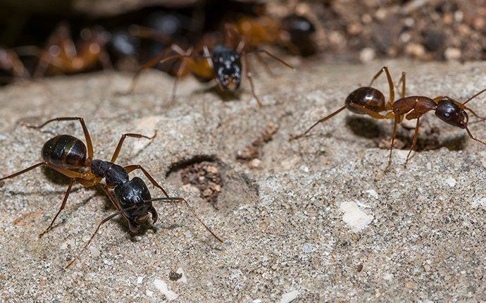Pests are all very unique and complex, making it challenging to combat them. For example, every creature typically has numerous subspecies. Variation is often found within size and color, but it doesn't stop there. There can be differences in behavioral patterns, dietary needs, and favored habitat. Comparisons with risk factors are the most important, however. This is undoubtedly the situation with ants.
Regardless of species, all ants can jeopardize your health. The bugs carry incalculable amounts of germs that can taint food and surfaces. It's highly possible to contract salmonella, viruses, or other conditions. What's even more frightening is that some subgroups come with additional hazards. Case in point, carpenter ants destroy wood. Your Yakima County, WA home could easily be victimized. Find out what draws these bugs in and how you can stop them with Prosite.
How Do Carpenter Ants Function? What Are the Dangers?
Creating nests and tunnels in the wood are the primary objectives of carpenter ants. Rotting tree bark, logs, and lumber are what they usually attack. Openings in vents, utility lines, and foundations are some of their common entry points. They're able to get across rooflines via overhanging tree branches. Among the things they feed on are fellow bugs and honeydew secretion from aphids. They'll have a feast with sugary foods, meat, proteins, and pet fare if indoors. Considering their eating habits, their presence suggests a more significant pest problem.
Carpenter ants wreck walls and bases from the inside and then out. Soon, the ruin will be pretty obvious visually. These pests are very similar to termites, but their pacing is markedly slower. Aside from that, the extent and cost of needed repairs are about the same. You also won't know they're around until it's too late. Hitting on a structure will sometimes make them appear. With all of this in mind, you must look out for infestation indicators such as:
- Noticing mixed stacks of wood shavings and ant body parts
- Discovering the shed wings of swarmers
- Hearing soft noises from inside walls
- Having hollow-sounding walls
Being 0.25 to 0.50 of an inch long, carpenter ants are much larger than most of their relatives. Their shading ranges from yellow, orange, red, brown, or reddish-black. A large portion is entirely black, though. Colony workers have bulky mandibles; they utilize these to grind wood. Swarmers have wings, and they exit nests to mate and forge new ones. Keep your eyes on your lamps and windows for them; they're attracted to light.
What Can One Do to Prevent Carpenter Ants?
To build your defense against carpenter ants, you'll need to upgrade your exterior maintenance practices. Also, you'll need to beef up your interior cleaning standards by:
- Closing up holes in paneling, caulk, foundations, windows, doors, and utilities.
- Make sure that door sweeps, window screens and all weatherstripping is in good condition.
- Having moisture defects and leaks repaired right away. Start with those dampening wood.
- Getting rid of decaying wood and trees.
- Putting food and garbage in secure containers.
- Washing dishes and vacuuming carpeting on a routine basis.
- Sitting woodpiles and plants at least two feet away from the property.
- Contacting Prosite if you have critters carpenter ants target.
How Will Prosite Handle Carpenter Ants?
The experienced technicians at Prosite will efficiently locate carpenter ant nests and passageways and address them with industrial-grade treatments. Our solutions are safe and are designed to protect against structural damage. As a customer, you’ll have access to quality care and affordable residential control plans that are comprehensive and affordable. When you call today, you’ll be given a helpful consultation!

